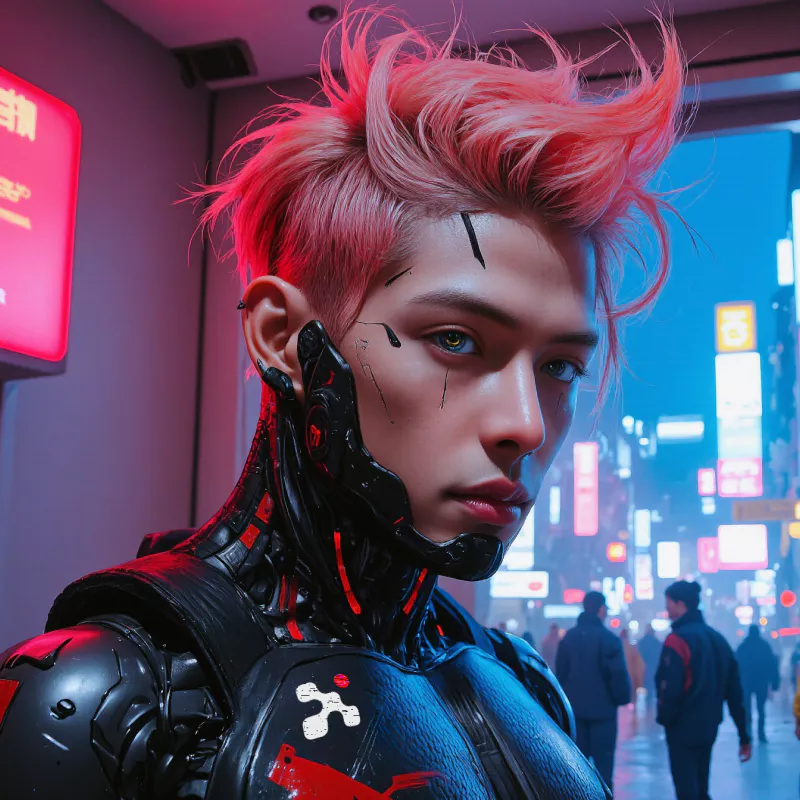Shooting with a 24 mm lens
 jenxi.com
jenxi.com Vision alchemist crafting strategic innovation & AI adoption. Bridging startups to China's ecosystem advantage. Building a cyberbrain. Registered pharmacist × Brand strategist × Storyteller
I shoot street photography with a 24 mm lens. One of the first things Charlie Kirk suggested I do to improve my street photos was to pick up a 24 mm lens. I was very hesitant because it meant I had to get very close to my subjects, something I wasn’t comfortable with.
Shooting with other focal lengths
I started off shooting street photography with my DSLR equipment. I had a Nikon D700 with a 50 mm and a 70-200 mm lens. These were used for street portraits of strangers, a project inspired by Danny Santos. However, they blurred out the background to isolate the subject. While the photos look good with the bokeh making the subjects pop out, the isolation also meant that the subjects felt disconnected from their surroundings.

While useful in portraiture photography where I wanted to isolate the subjects, telephoto and large aperture do not give the desired results in street photography.
I begun experimenting with wider lenses to try to incorporate more of the scene. I had a Nikon AF-D 35 mm lens and my Fujifilm X100 also had an effective focal length of 35 mm. I also had a Ricoh GR Digital III. Its 28 mm focal length was perfect for getting more of the scene in the frame, but I had to get much closer to my subjects.

My current setup is a Voigtlander 21 mm Color-Skopar f/4 SC lens on my Leica M8. This gives it an effective focal length of 24 mm. Such a wide angle does take some getting used to. But once you start getting good photos out of it, you’ll learn to appreciate how liberating this lens is.
Zone focusing
It can be hit and miss shooting street photography with a manual focus camera. However, using the 24 mm lens meant that I could easily shoot using zone focusing.

By shooting between f/8 and f/16, I could focus to the hyperfocal distance point to have the subject and background in focus. It doesn’t take long to get used to the distances. For my lens, the closest it can focus is 50 centimetres. That is roughly an arm length away. So I know how close I can get without my subjects going out of focus.
Flashes of brilliance
The Leica M8 as an old CCD sensor that is awful in low light wide open. At f/8 or f/16 in the day, it might still not be bright enough. So I have a flash permanently in my hot shoe. I was using my DSLR speedlight but at the recommendation of my buddy Daniel Ho, I’m now sporting a compact and lighter Viltrox Speedlite JY610II. Packs a punch. Small enough not to affect the balance like the larger flash lights would.


Using flash is a whole new topic that I won’t cover today. It is a whole school of lessons on its own. I’ll just point out what using flash can create three-dimensional effects through the use of shadows, or even flatten parts of the scene into two dimensions with blown out or absolute dark areas.
Going closer
Most of the street photographers I admired shot with wide angle lenses that allowed them to capture more of the scene and forced them to go close to the subjects.
It wasn’t easy getting used to the 24 mm lens. I realised I have to be in the thick of the action to get photos with my subjects filling the frame. But that is exactly why photos shot as this focal length smells of the street or the scene you’re at.
It immerses the viewer in the action because it was taken in the action.

Noticing clutter
Aside from getting out of my comfort zone and move closer to the people I want to shoot, I had be very conscious of what the frame includes. It is very easy for the lens to pick up distracting clutter in the scene.
Once you start to get the hang of using the focal length, you’ll notice that it is not hard to get rid of clutter. You just need to angle it right.

Angle it right
Put on a wide angle lens and give it a try. While maintaining the same height, twist your camera up and down to see how that affects your shots of the same subject. Next, try moving your hands up and down while doing that. Finally, bend and straighten your hands while you move your hands. Isn’t that amazing?

Put on a wide angle lens and give it a try. While maintaining the same height, twist your camera up and down to see how that affects your shots of the same subject. Next, try moving your hands up and down while doing that. Finally, bend and straighten your hands while you move your hands. Isn’t that amazing?
Now keep that lens on your camera and shoot it for a week or a month.